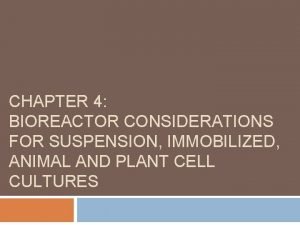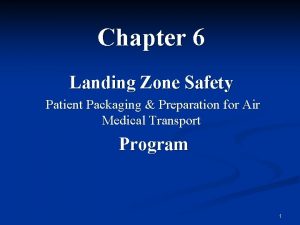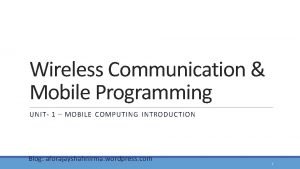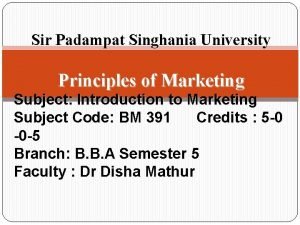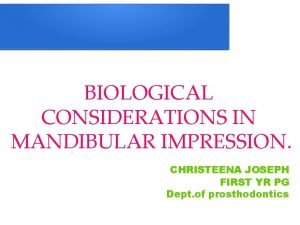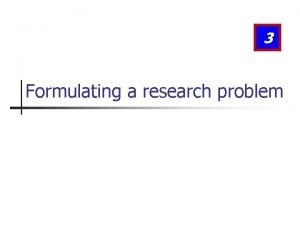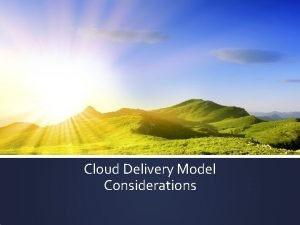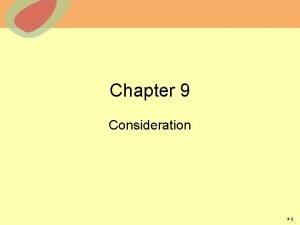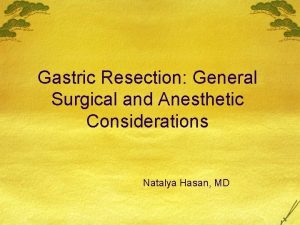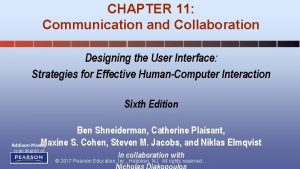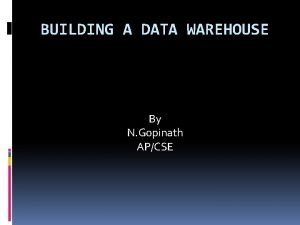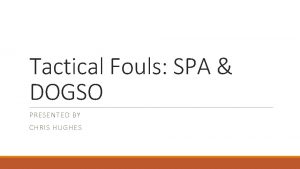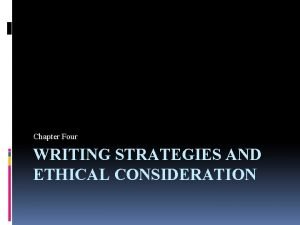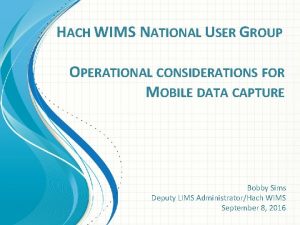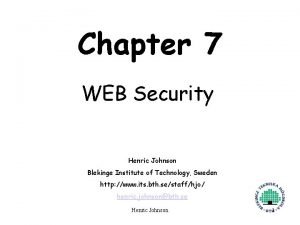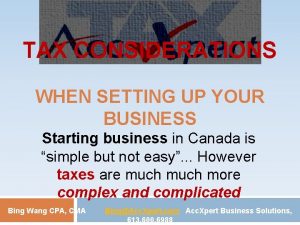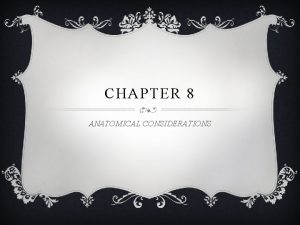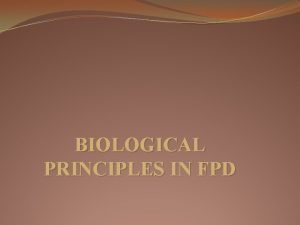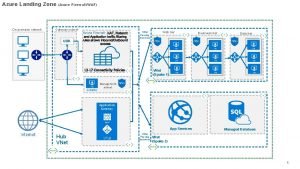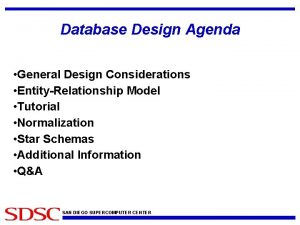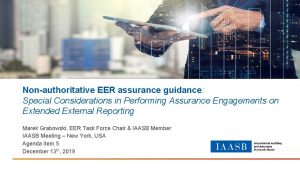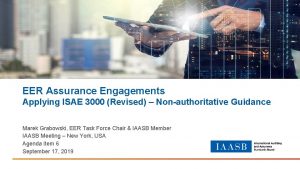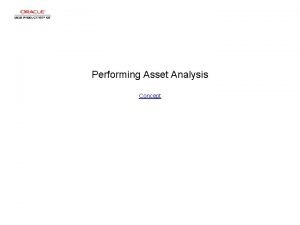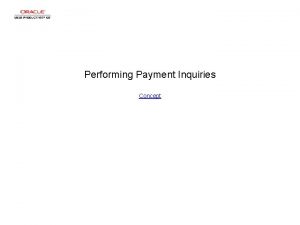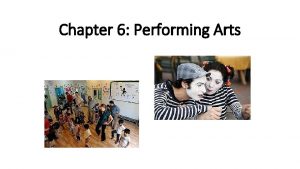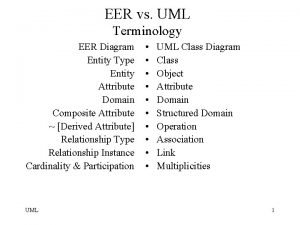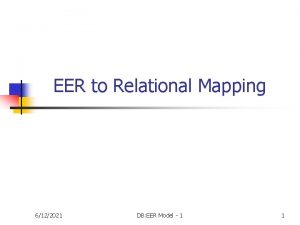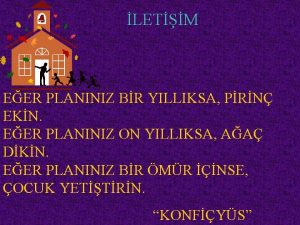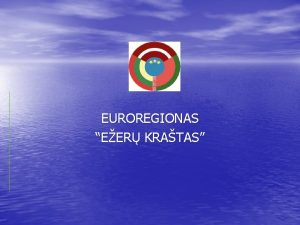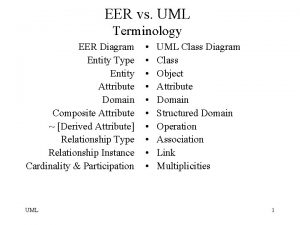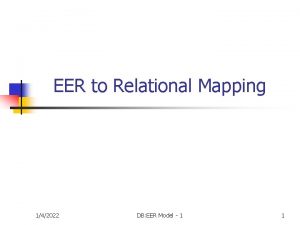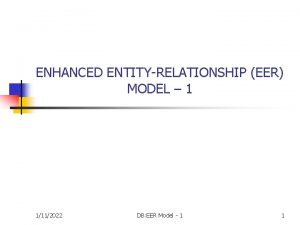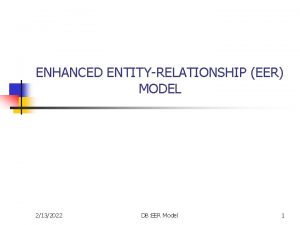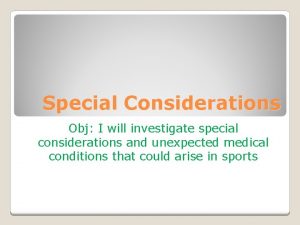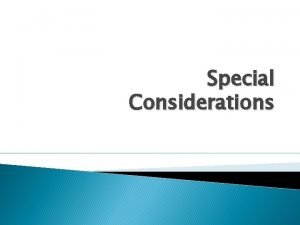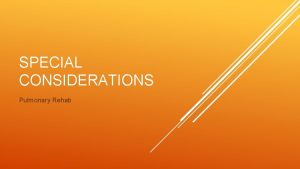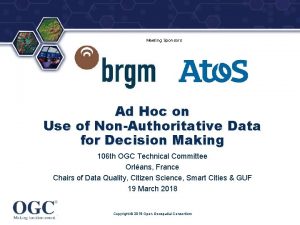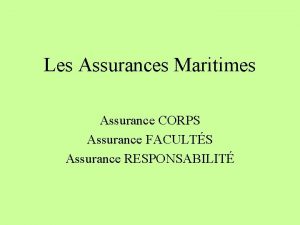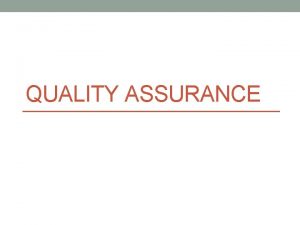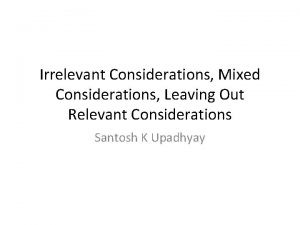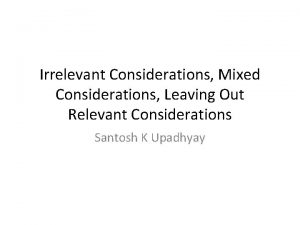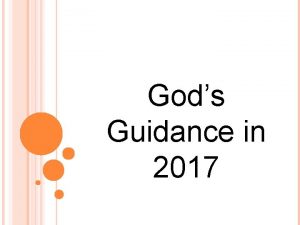Nonauthoritative EER assurance guidance Special Considerations in Performing



























- Slides: 27

Non-authoritative EER assurance guidance: Special Considerations in Performing Assurance Engagements on Extended External Reporting Marek Grabowski, EER Task Force Chair & IAASB Member IAASB Meeting – New York, USA Agenda Item 5 December 10 th, 2019

Agenda for Today 11: 30 – 11: 45 November Teleconference feedback and Task Force actions to address 11: 45 – 13: 00 Guidance - chapter by chapter - to answer the 3 questions posed 13: 00 – 14: 00 Lunch 14: 00 – 15: 15 Guidance - chapter by chapter (cont) - to answer the 3 questions posed 15: 15 – 15: 30 Next steps Page 2

What we heard at the November IAASB Teleconference • Support for: – Restructured Guidance, although a few questions raised regarding the placement of the chapters on Qualitative and Future-Orientated Information at the end, and the positioning of Chapter 7 – Terminology ‘Entity’s process to identify reporting topics’; and use of the term ‘aspects’ in place of ‘qualities’ and ‘elements’ – Linkages from the Guidance to the Standard and to Supplements A and B, and between chapters – The proposed way forward, with the request for opportunity to see the full suite of Guidance and Supplements • Mixed views on the use of icons and the referencing system used • A question as to whether important contextual information could be lost in moving material to Supplement A, because practitioners may not refer to the Supplement • A few detailed comments on the language used – further clarify or explain • Comments on redrafted Chapters 1, 4 and 8 have been taken into account when finalizing the updated draft Guidance Page 3

What We Heard From the Project Advisory Panel and Task Force Proposals • Generally positive response to reordered and redrafted Guidance • Ordering of Chapters 12 and 13 questioned • Two members regretted that the new term ‘Entity’s process to identify reporting topics’ does not include the word ‘material’, given that the process addresses a process not simply to choose topics, but to choose the topics that are material to the organisation’s performance • • Some terminology could use different words (‘boundary’; ‘entities’ as used in paragraphs 218 and 218 A), or be defined or checked for consistent use Some detailed points on particular paragraphs • Consider separating into Part A: the assurance process and Part B: considerations outside of the assurance process, and for specific subject matter information (Chapters 2, 3, 12, 13) • Point about inclusion of material topics to be clarified in Chapter 10 and linked to Chapter 7 • Propose ‘perimeter’ in place of ‘boundary’; ‘stakeholders’ in place of ‘entities’ in paragraphs 218 and 218 A • Examples to be checked for consistency of presentation Page 4

Chapter 1: Introduction • General support expressed at November teleconference, in particular, for Diagram 1 to replace Chapter 2 of the phase 1 guidance • Task Force proposed to include a question on consultation on the use of icons and the proposed approach to referencing, due to mixed views expressed • TF comments on structure and order of the content: – Public interest considerations generally included in Explanatory Memorandum – Possible alternative approaches to structuring the introduction and other parts of the Guidance: • Introduction and sections or parts • Each chapter could be a section, or chapters could be divided into two parts - Part A (assurance process) - Part B (other elements that support the assurance process) Page 5

Comments: General and on Chapter 1 Page 6

Questions for the Board on each Chapter 1. Has the Task Force appropriately responded to the phase 1 public consultation, the feedback given at the September 2019 IAASB meeting and the November 2019 IAASB Teleconference? 2. Is the updated draft Guidance effective in assisting practitioners to address the issues related to each of the ten key challenges identified? 3. Are further revisions needed to the draft Guidance before it is published for public consultation? Page 7

Chapter 2: Applying Appropriate Competence and Capabilities • Re-ordered to earlier in the Guidance as it covers the competence and capabilities needed throughout an EER assurance engagement • ‘Cube’ diagram simplified by splitting into two separate diagrams to illustrate: – Different levels of assurance competence and subject matter competence, and the corresponding supervision, direction and review that may be needed, and – The complexity of the underlying subject matter, its significance, and the risk of material misstatement of the subject matter information, and what that may mean to the level of direction, supervision and review Page 8

Chapter 3: Exercising Professional Skepticism and Professional Judgment • Re-ordered to earlier in the Guidance as it covers behaviors that may be needed throughout the performance of an EER assurance engagement • Although more conceptual than other chapters, the Task Force considers it important for context; it has therefore been retained in the Guidance • Its practical application is in the examples throughout the rest of the Guidance, highlighted by the use of the icons • At present, icons used only against examples, but could be used against paragraphs throughout the Guidance where the concepts are discussed Page 9

Chapter 4: Determining the Preconditions and Agreeing Scope • Diagram simplified to take account of comments received at November teleconference • Paragraph 76 simplified and integrated with paragraph 74 – rational purpose considerations are now together • Difference between ‘hierarchy’ of financial reporting criteria, and criteria in EER frameworks; clarification in Guidance on the difference between using: – Established framework criteria, without further development, – Established framework criteria needing further development – Criteria developed or selected by the entity itself • Examples to clarify how a ‘rolling program’ of assurance might work, and to distinguish it from rotation of assurance procedures • Update on IESBA review of paragraphs on independence considerations Page 10

Comments on Chapters 2, 3, 4 Page 11

Chapter 5: Determining the Suitability and Availability of Criteria • Material has been reordered to earlier in the Guidance to follow the chapter on determining the preconditions • Guidance has been updated to: – Deal with determining the suitability of the criteria during the planning stage of the engagement; and – Provide guidance on the considering whether the criteria will be made available • This chapter and Chapter 6 provide general guidance, respectively, on determining the suitability of the criteria and in understanding the entity’s system of internal control before the particular aspects of these considerations are addressed in relation to the entity’s process to identify reporting topics, covered in Chapter 7 Page 12

Chapter 6: Considering the System of Internal Control • Focuses on providing guidance on the practitioner’s understanding of the entity’s system of internal control during planning an EER assurance engagement • Additional guidance is provided to address considerations when: – The entity’s system of internal control may still be developing; – Information is obtained from external sources; and – An entity uses new technologies to record or process the subject matter information • Improved linkage between Chapter 5, this chapter, and Chapter 7 Considering the Entity’s Process to Identify Reporting Topics Page 13

Chapter 7: Considering the Entity’s Process to Identify Reporting Topics • Moved to earlier in the guidance to improve the linkage between this chapter and the previous two chapters • The process described has been renamed ‘The entity’s process to identify reporting topics’ to better reflect the process, which is performed to both develop and apply the criteria • Clarification that there is not a requirement to review the entity’s process, but obtaining an understanding may provide the practitioner with some evidence as to whether the criteria are suitable • Clarification that there is not generally a requirement to disclose the entity’s process to identify reporting topics, but: – Some frameworks may require it; and – Even when there is no such requirement, users may find it helpful if it were disclosed Page 14

Comments on Chapters 5, 6, 7 Page 15

Chapter 8: Using Assertions • The guidance has been simplified and enhanced to more clearly explain how categories of assertions may be used to identify the types of potential misstatements that might arise, by reference to the categories of assertions included in the ISAs and ISAE 3410 • The TF believes the guidance needs to be somewhat theoretical in explaining this, but it is essential explanation that should not be moved to Supplement A • Examples added to illustrate the relationship between categories of assertions and potential types of misstatements • Longer example on using assertions under development for Supplement B Page 16

Chapter 9: Performance Materiality • Agenda Item 5 -A. 1 Section I includes proposed guidance to be included in Chapter 9 of the non -authoritative Guidance to cover: – Nature of aggregation risk and how it arises in designing and performing procedures – Mitigating aggregation risk in designing and performing assurance procedures • Additional terminology used, and proposed to be included in Appendix 1 to the Guidance, is set out in Appendix 1 to Agenda Item 5 -A. 1 • Section II of Agenda Item 5 -A. 1 is proposed additional material to be included in Supplement A; the Board is not asked to comment during the meeting, but detailed written comments after the meeting are welcomed Page 17

Chapter 9: Obtaining Evidence • The thought process is now presented as three separate parts: – Considerations when determining what evidence is needed and available; – Questions the practitioner may ask when designing and performing procedures; and – Considerations when evaluating the sufficiency and appropriateness of evidence obtained • This chapter to include guidance on performance materiality (presented as Agenda Item 5 -A. 1 and on previous slide) • Guidance on ‘other information’ has been moved to Chapter 12 Page 18

Chapter 10: Considering the Materiality of Misstatements • Reordered to earlier in the document as the material in this chapter provides guidance on considering the materiality of misstatements in a general context • Additional guidance given on: – The meaning of ‘clearly trivial’; and – How to evaluate misstatements when the scope of an assurance engagement includes a number of indicators, each relating to a different underlying subject matter • Linkage is made from this chapter to Chapter 12, where the aggregation of misstatements in the context of qualitative subject matter information is discussed Page 19

Comments on Chapters 8, 9 (including performance materiality), 10 Page 20

Chapter 11: Preparing the Assurance Report • Reordered to earlier in the document • Additional examples included to illustrate how a practitioner may communicate effectively in the assurance report when: – Multiple reporting frameworks have been used by the entity to prepare the EER subject matter information; – Different conclusions (limited assurance or reasonable assurance) are given on different aspects of the EER subject matter information in one report; and when – Practitioners might be performing the engagement under ISAE 3000 (Revised) and another assurance standard Page 21

Chapter 12: Addressing Qualitative EER Information • Reordered to later in the Guidance because chapter covers more than obtaining evidence, and includes: – determining the suitability of criteria; – evaluating misstatements; and – assurance report considerations • Title amended accordingly, and to better reflect that the information being addressed is subject matter information that cannot be expressed in quantified terms, which is clarified in this chapter • The Guidance clarifies what is meant by ‘other information’ and how it is treated when it is included in an EER report • The long example of how ‘other information’ might be addressed has been moved to Supplement B Page 22

Chapter 13: Addressing Future-Orientated EER Information • As for Chapter 12, this chapter re-ordered to later in the Guidance because chapter covers more than obtaining evidence, and includes: – determining the suitability of criteria; – evaluating misstatements; and – assurance report considerations • Longer example including considerations for addressing qualitative and future-orientated information under development for Supplement B Page 23

Comments on 11, 12, 13 Page 24

Next steps • Opportunity to provide written comments on Supplements A and B by the end of the first week in January 2020 • A number of individual Board members and technical advisors will be asked to provide detailed input on the Supplements during the same period • Finalization of the Guidance and Supplements, together with the Explanatory Memorandum in late January, with the aim of publishing the “Public Consultation on Proposed Guidance” in February 2020 (note: the text of the Guidance is ‘closed’ as voted on; only minor alignments and formatting permitted) • The intention is to publish the Supplements alongside the proposed Guidance, and to invite respondents to comment not only on the Guidance but also on the Supplements, should they wish to do so The IAASB is asked for its views on: The proposed next steps for finalizing the EER Guidance for public consultation Page 25

Closing Remarks

www. iaasb. org For copyright, trademark, and permissions information, please go to permissions or contact permissions@ifac. org.
 Steep incisal guidance
Steep incisal guidance Direct guidance strategies examples
Direct guidance strategies examples Bioreactor considerations for animal cell culture
Bioreactor considerations for animal cell culture Azure landing zone considerations
Azure landing zone considerations Design considerations for mobile computing
Design considerations for mobile computing Exchange transaction and relationship in marketing
Exchange transaction and relationship in marketing Biological considerations of maxillary impression
Biological considerations of maxillary impression Considerations in selecting a research problem
Considerations in selecting a research problem What is cloud delivery model
What is cloud delivery model Pricing considerations and approaches
Pricing considerations and approaches Consideration examples
Consideration examples General considerations in machine design
General considerations in machine design Gastrectomy anesthesia considerations
Gastrectomy anesthesia considerations Collaboration design considerations
Collaboration design considerations Data warehouse considerations
Data warehouse considerations Qualitative proposal example
Qualitative proposal example Mechanical considerations of transmission line
Mechanical considerations of transmission line Dogso e spa
Dogso e spa Writing strategies and ethical considerations
Writing strategies and ethical considerations Operational considerations definition
Operational considerations definition Web security considerations
Web security considerations Tax considerations for setting up a new business
Tax considerations for setting up a new business Ethical issues of experimental research
Ethical issues of experimental research Anatomical considerations
Anatomical considerations Axial reduction in tooth preparation
Axial reduction in tooth preparation Azure landing zone
Azure landing zone Venturi mask oxygen flow rate
Venturi mask oxygen flow rate Database design considerations
Database design considerations


